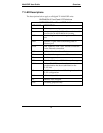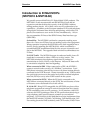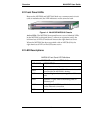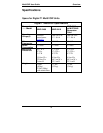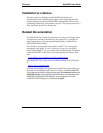
MultiVOIP User Guide Overview
19
H.323 specifications also bring to voip telephony many special features
common to conventional telephony. H.323 features of this kind that
have been implemented into the MuliVOIP include Call Hold, Call
Waiting, Call Identification, Call Forwarding (from the H.450 standard),
and Call Transfer (H.450.2 from H.323 Version 2). The fourth version of
the H.323 standard improves system resource usage (esp. logical port or
socket usage) by handling call signaling more compactly and allowing
use of the low-overhead UDP protocol instead of the error-correcting
TCP protocol where possible.
The MultiVOIP is also SIP-compatible. However, H.450 Supplementary
Services features can be used under H.323 only and not under SIP.
Gatekeepers. Gatekeeper software is optional and when used in a
network, it typically resides on a designated PC. It acts as the central
point for all calls within its zone and provides call control services to all
registered endpoints. In addition, Gatekeepers can perform bandwidth
management through support for Bandwidth Request, Confirm, and
Reject messages.
Management. Configuration and system management can be done
locally with the MultiVOIP configuration software. After an IP address
has been assigned locally, other configuration can be done remotely
using the MultiVOIP web browser GUI. Remote system management
can be done with the MultiVoipManager SNMP software or via the
MultiVOIP web browser GUI. All of these control software packages
are included on the Product CD.
RCVXMTCOLLNK XMTRCVXSGRSG
XMTRCVXSG RSG XMTRCVXSGRSGXMTRCVXSGRSG
XMTRCVXSGRSG
XMTRCVXSGRSG
XMTRCVXSGRSG
Voice/Fa x 5 Voic e/ Fax 6Voice/Fax 7Voice/ Fax 8
Voic e /Fax 1 Voice/ Fax 2Voice/Fax 3 Voice/ Fax 4EthernetBoot
Power
XMTRCVXSG RSG
Figure 1-5: MVP-410/810 Chassis
Figure 1-6: MVP-210 Chassis





